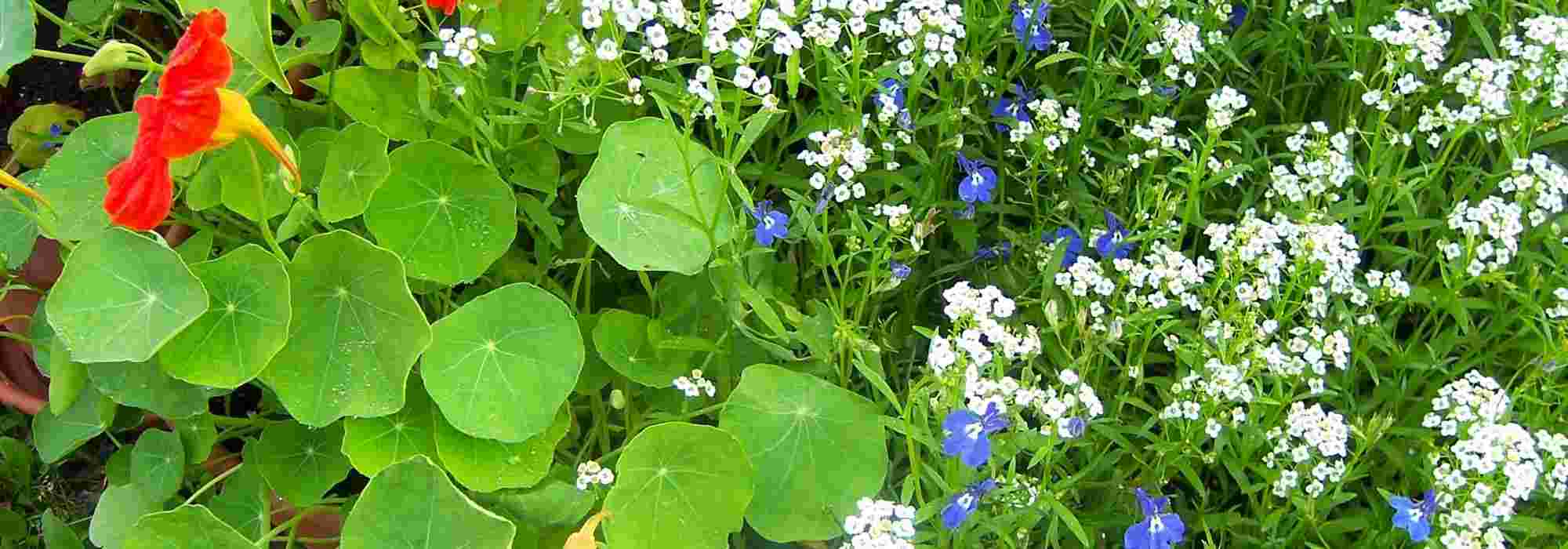
10 Easy Annual Flowers to Sow
Perfect for beginner gardeners!
Contents
Somewhat doubtful about your ability to grow plants from seeds, due to a lack of time or experience, you postpone this task from season to season. The result: yet another summer without flowers! However, there are easy-to-sow annual flower seeds that you can cultivate. You’ll enjoy the satisfaction of seeing little flowers appear after just a few weeks of waiting! Perfect for beginner gardeners, these flowers are nearly foolproof and can be sown directly in the garden or in pots. Sow these bright flowers and then let nature take its course!
They are ideal plants for low-maintenance or weekend gardens. They offer an endless variety of shapes, sizes, colours, and scents, allowing you to create lovely flower beds, lush borders, window boxes, or flowering meadows, changing your decor each year according to your desires. They are also beautiful, yet fleeting, in cut flower arrangements. Here’s a selection of 10 quick-to-sow and grow annual plants, perfect for creating a floral display in no time.
If you want more options, discover all our annual flower seeds!
Annual poppies
The California Poppy offers simple, crumpled, or double to semi-double flowering in vibrant colours that renew abundantly from June to September. It also features finely divided, highly ornamental foliage. While the most well-known variety has bright orange flowers, there are now pink, multicoloured, and peach varieties available. It easily self-seeds in light soil and thrives in the most challenging situations (gravel, rocky outcrops filled with stones, dry banks). Sow the seeds of Eschscholzia californica directly in place from March to May or in September. Choose a very sunny spot and sow in poor, well-drained, sandy, or stony soil.
It is equally at home in flowering meadows as in the natural beds of a vicar’s garden or more sophisticated settings, in rockeries or pots on the terrace. Its melliferous and nectariferous flowering attracts insects throughout the summer.
The Papaver Rhoeas or Poppy blooms in summer, from May to August depending on the climate, with its crumpled, simple, vibrant corollas. Undemanding, this wild annual self-seeds spontaneously wherever it pleases. Its sowing is foolproof. Sow the poppy seeds directly in place outdoors in spring or early autumn. While the most well-known is the red poppy, there are now varieties with more delicate shades such as Papaver rhoeas ‘Parelmoer’. Comfortable in wild gardens, vicar’s gardens, and gardens without gardeners, it grows in the sun in any soil, even mediocre.
Discover everything you need to know about poppies and annual poppies!
Nasturtium
The Nasturtium has everything to please! It is very easy to sow, grows quickly, and flowers from June until the first frosts. With its trumpet-shaped flowers in vibrant colours of red, orange, and yellow, along with its lovely round leaves, it always brings a lot of cheer to the garden, as well as to balconies or terraces. It thrives in the sun and is content with all types of soil, even poor ones. Nasturtium seeds can be sown indoors from February (or in September) in pots or trays, or directly in the garden from March to May.
Highly floriferous and fast-growing, nasturtium is an excellent choice as a climbing plant, as well as a groundcover. It is perfect for quickly dressing up a trellis, fence, gazebo, or simply edging a border. It can also be grown in pots, window boxes, or hanging baskets. With its edible flowers, nasturtium also finds its place in the vegetable garden, where it will attract aphids away from your vegetables!
→ Feel free to check our guide on nasturtiums and our tutorial How to sow nasturtiums?
Discover other Flower seeds
View all →Available in 1 sizes
Available in 1 sizes
Available in 1 sizes
Available in 1 sizes
Available in 1 sizes
Available in 1 sizes
Available in 1 sizes
Available in 1 sizes
Available in 1 sizes
Available in 1 sizes
Ipomoea
Ipomoea or bindweed is a climbing liana with large heart-shaped leaves, producing trumpet-shaped flowers in white or azure blue, as well as red, throughout the summer. It grows rapidly, quickly covering a trellis, an unsightly wall, a dead tree, a planter, or any support provided. It allows for quick greening of terraces and balconies without taking up ground space: it is perfect for city gardens. You can pair it with other ephemeral climbers like Sweet Peas or climbing Nasturtiums.
Ipomoea seeds should be sown in March under cover or directly in the ground from late April to June in full sun in well-drained garden soil to thrive.
→ Discover our advice sheet to learn all about ipomoeas.
Read also
Beautiful hanging baskets of flowersMarigold
The Marigold or Calendula officinalis is a lovely annual plant that is highly ornamental. Well-known for its edible flowers, it also boasts a generous and continuous flowering period from May until the first frosts. It is one of the easiest annual flowers to grow. The Calendula seeds can be sown directly in place from March to June. It thrives in any light, well-drained soil, in full sun. Originally orange-yellow, Calendula flowers now come in a variety of shades, ranging from lemon to cream-white (Calendula officinalis ‘Snow Princess’).
The marigold is inseparable from cottage gardens, country gardens, and colourful mixed borders where it happily self-seeds spontaneously. Dwarf varieties are perfect for window boxes and pots on a terrace or balcony. Edible, it also has its place in an organic vegetable garden where it attracts aphids while repelling unwanted insects.
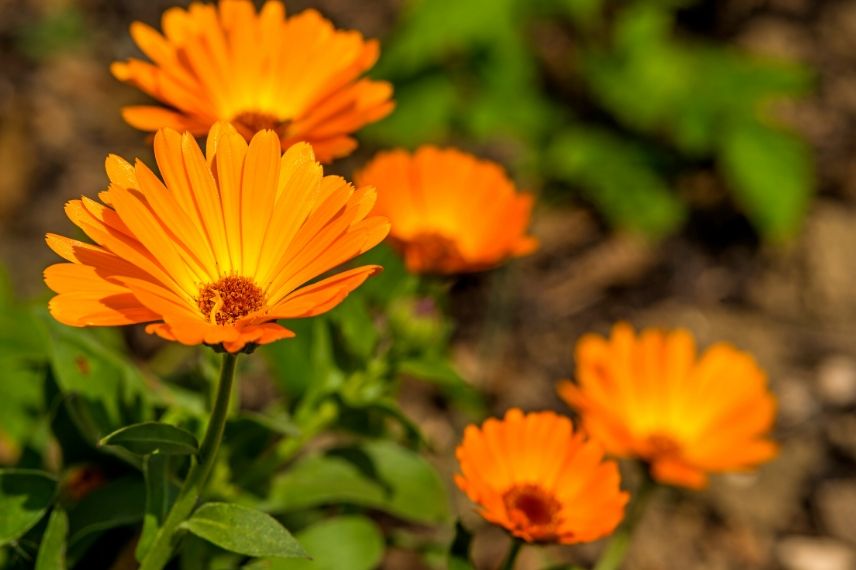
marigolds
→ To learn more about this essential plant, check our sheet: Marigold or Calendula.
Nigella damascena
Nigella is a very attractive annual plant that offers a refined flowering, set against extremely fine, airy foliage. Sow directly in place in spring or late summer. It self-seeds very easily in the garden. Low-maintenance and content with little, Nigella thrives in well-drained, light soil, even poor soil. It is perfect for occupying the less desirable areas of the garden where the soil is poor, dry, or rocky. You can create beautiful flowering pots for spring by sowing the seeds in a cold greenhouse or conservatory in late summer and autumn. It can be sown anywhere in rockeries or sunny borders, in natural gardens, and even in pots. You can sow it alongside other annual plants such as poppies and cosmos to create a wildflower bed.
→ Discover our guide to learn all about Damascena Nigellas.
Cosmos
The Cosmos is undoubtedly one of the easiest annuals to grow! It brings colour and cheer to the garden throughout the beautiful season with minimal maintenance. It has an unflagging flowering period from June until the first frosts. Sow Cosmos seeds in May after the last frosts in well-drained ordinary garden soil. They will even flower in dry soil and will easily self-seed.
For 6 months, the cosmos displays large, simple or double, pure white to burgundy flowers, supported by airy and elegant foliage. It fits seamlessly into summer borders, flowering in the vegetable garden, dry rockeries, edges, and even in window boxes or pots on the terrace or balcony. It is the companion of easy-care gardens requiring little attention. It suits both small gardens and large flowering prairies. It will produce lovely cut flowers.
→ Read our sheet to (re)discover this must-have in gardens: Cosmos, sowing and planting.
Sweet Pea
The Sweet Pea is a delightful annual climbing plant, perfect for quickly flowering beautiful areas, either on the ground or vertically. Its somewhat old-fashioned flowering adds a lot of charm to the support it climbs in just one season. A boon for quickly flowering an unsightly fence or creating a green screen on a balcony, for example, to isolate from prying eyes. It is equally charming in summer borders or in hanging baskets, or even in the vegetable garden for its cut flowers. It offers solid or bicoloured flowers, showcasing an infinite array of colours, sometimes soft and pastel, sometimes vibrant. Some varieties are highly fragrant.
Sowing directly in place is child’s play: proceed directly in open ground, from March-April in fertile, well-exposed soil. The secret: soak the seeds in water overnight before sowing.
→ Feel free to check out our articles: all about Sweet Peas and How to succeed in sowing sweet peas (tutorial)
Sunflower
The Helianthus annuus, Sunflower or “Garden Sun” is an ultra-easy annual plant to sow, boasting spectacular growth. In a single season, it can reach heights of up to 4 m and produce enormous heads over 40 cm in diameter. It flowers from July to October, in vibrant colours of sunny yellow, as well as orange, brown, or red. Sow it and impress your neighbours! This sun flower transforms a bed, border, or even a terrace planted in a large pot in just a few weeks.
Annual Sunflower seeds are sown directly in the ground from late April to mid-June, or from March to May under cover. For optimal germination, it requires fairly fertile, well-drained soil that remains cool in summer. Allow 3 months from sowing to the start of flowering.
→ Find all our tips on sowing, planting, and caring for Sunflowers!
Annual mallow
With its silky flowers resembling those of Hibiscus, most often pink and mauve, the annual Lavatera (Lavatera trimestris and its cultivars ‘Loveliness’, ‘Ruby Regis’) quickly forms charming flowering bushes. Boasting an exceptionally long flowering period from July to October, it will bring colour and romance to perennial or annual beds, mixed borders, free-standing hedges, as well as to containers on a terrace or balcony. Sow it directly in place from May to June when the soil is well warmed. One packet of Lavatera seeds can flower several beds. It thrives in sunny locations and well-drained, light soils.
It will be perfect in annual beds with nigella, cosmos, or in pots, mixed with sweet peas.
→ To successfully grow lavateras, check our guide.
Marigold or Tagetes
Marigold or Tagetes is the star annual plant in summer beds and around the vegetable garden. It blooms in heads from spring to autumn in warm, vibrant shades of yellow or orange. There is no easier flower to grow! Foolproof, highly floriferous, and fast-growing, it is the ideal annual flower for beginner gardeners!
Weather-resistant and heat-insensitive, it thrives in full sun in ordinary, even poor and dry, well-drained soil. In May, sow it directly in place in warmed soil.
It quickly creates a cheerful and colourful display in beds, borders, and summer planters. It will brighten up every corner with small touches alongside California Poppies or Nasturtiums.
With its edible flowers and distinctive scent, it also finds its place in the vegetable garden, where it is renowned for its repellent effect against nematodes.
→ Discover everything you need to know about marigolds.
- Subscribe!
- Contents
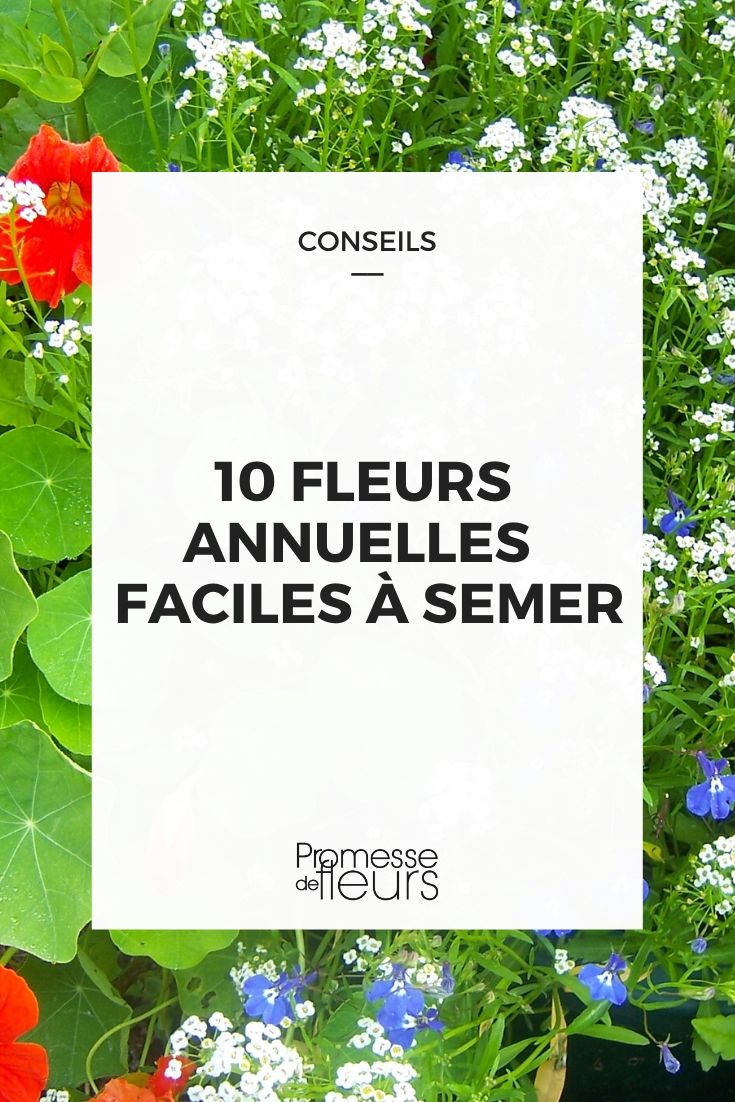































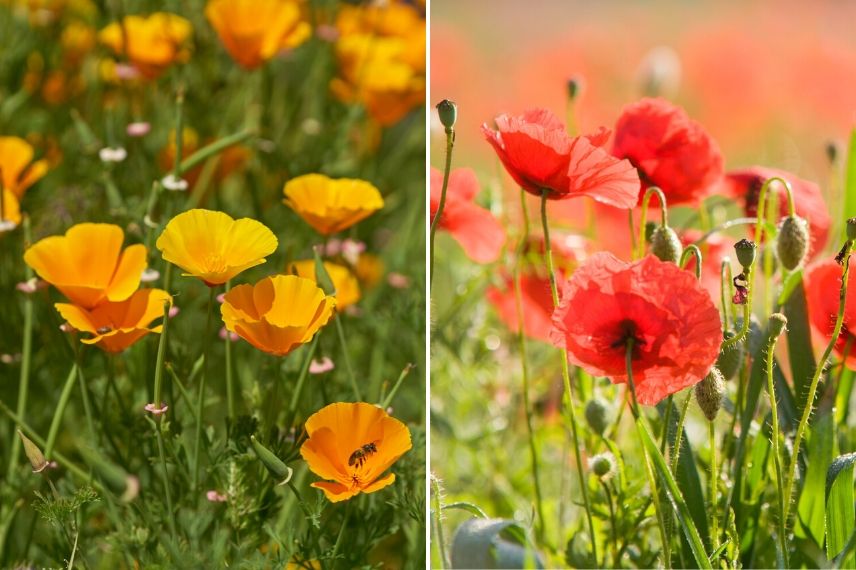
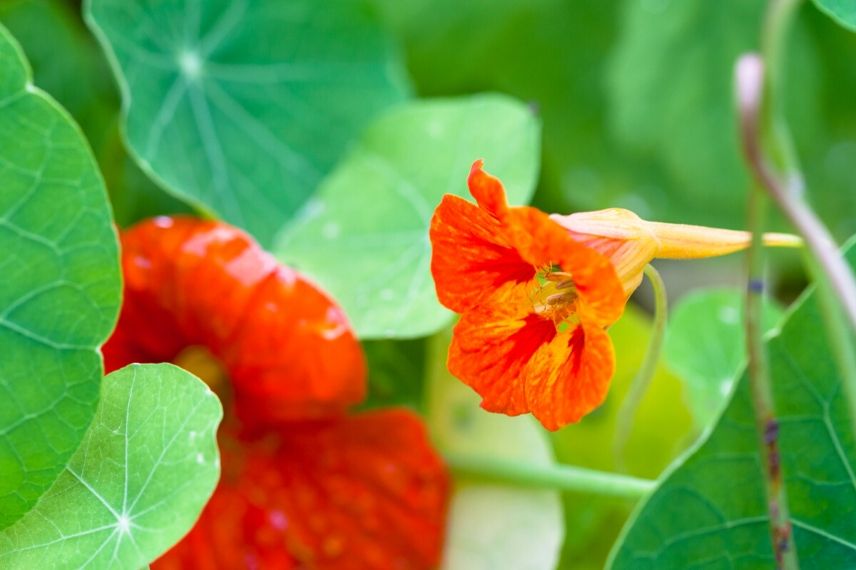
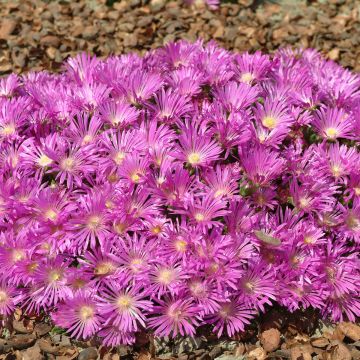
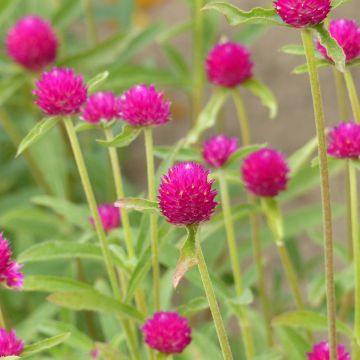
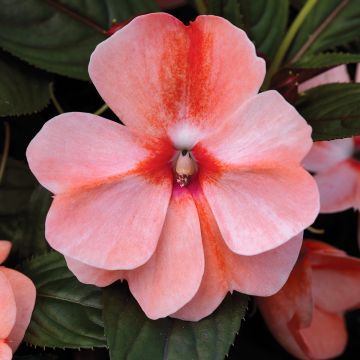
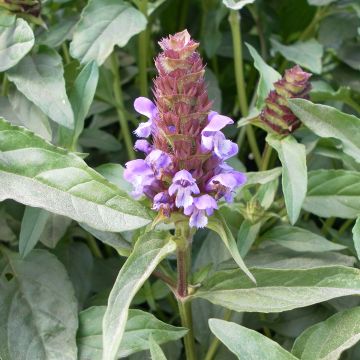
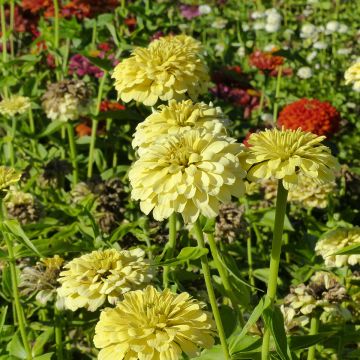
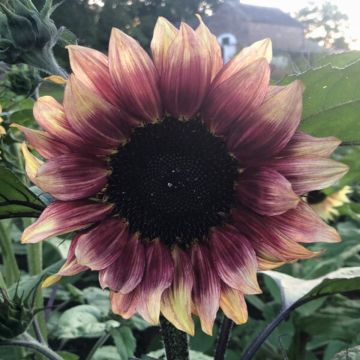
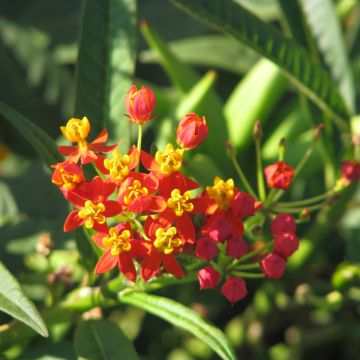
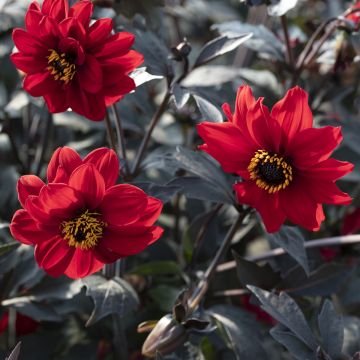
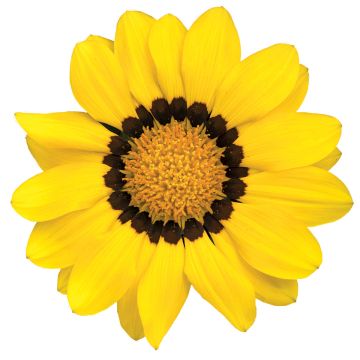

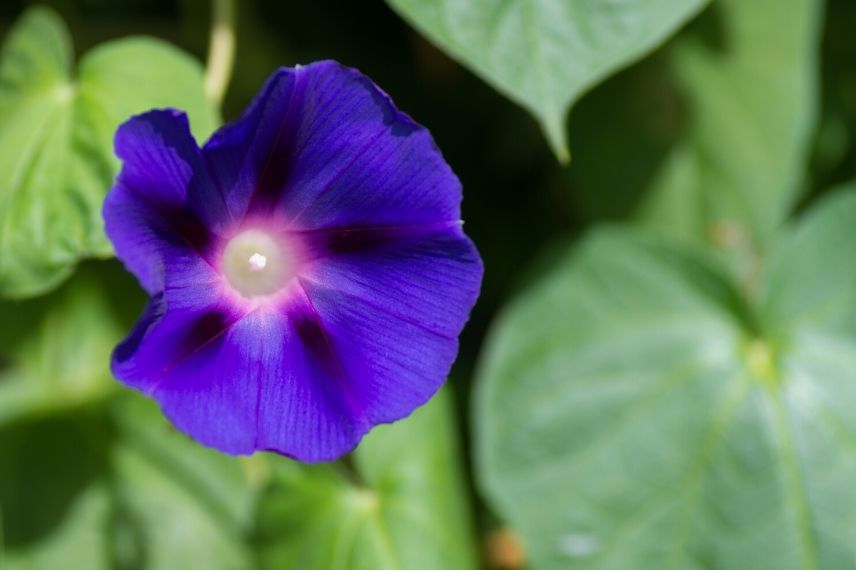
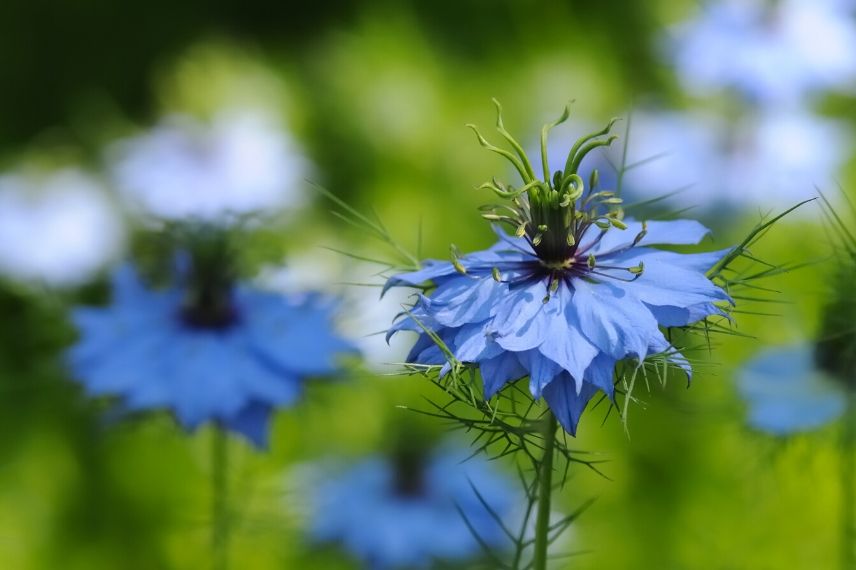
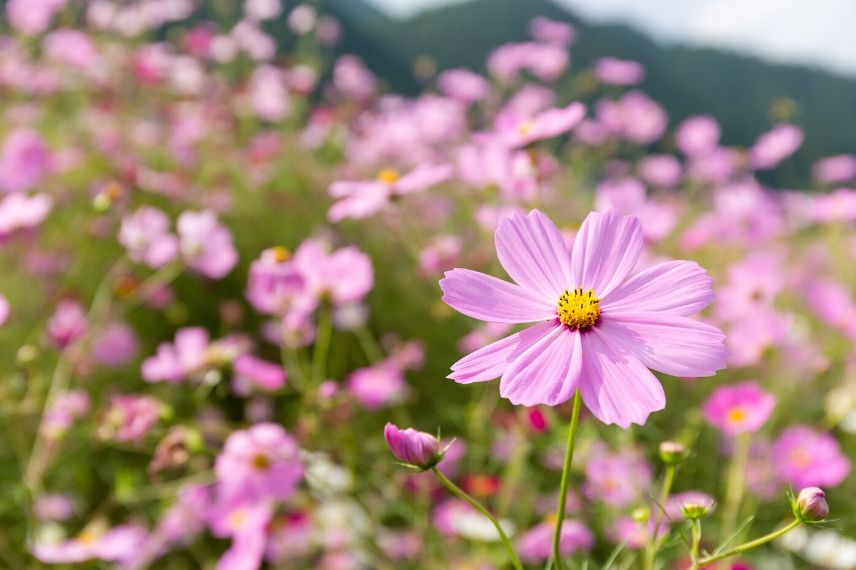
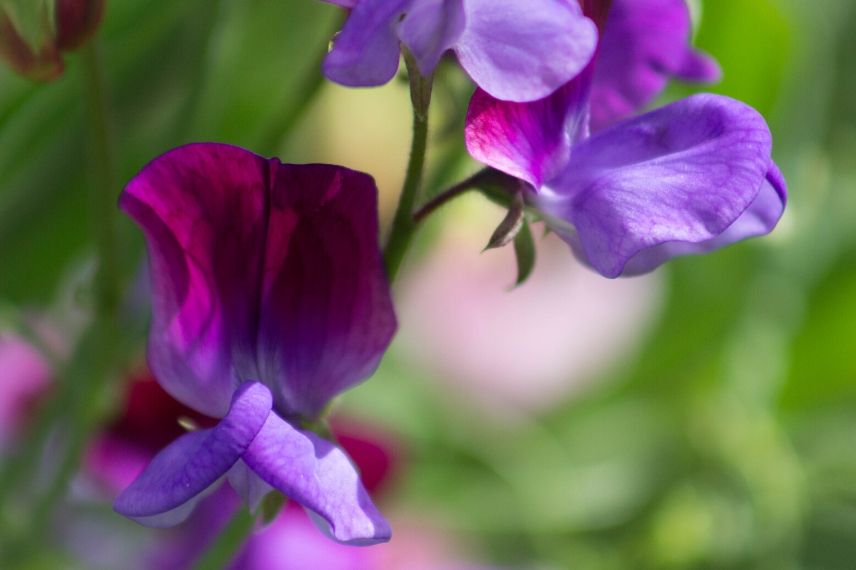
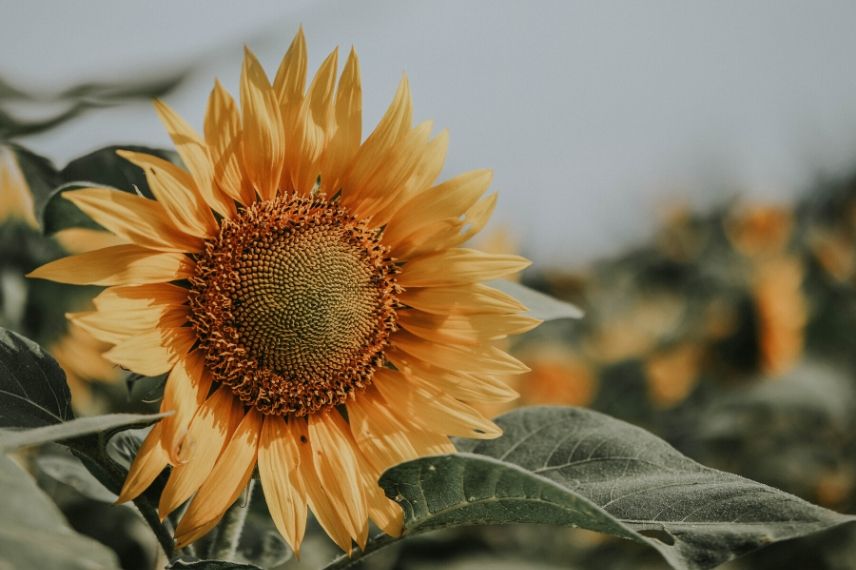
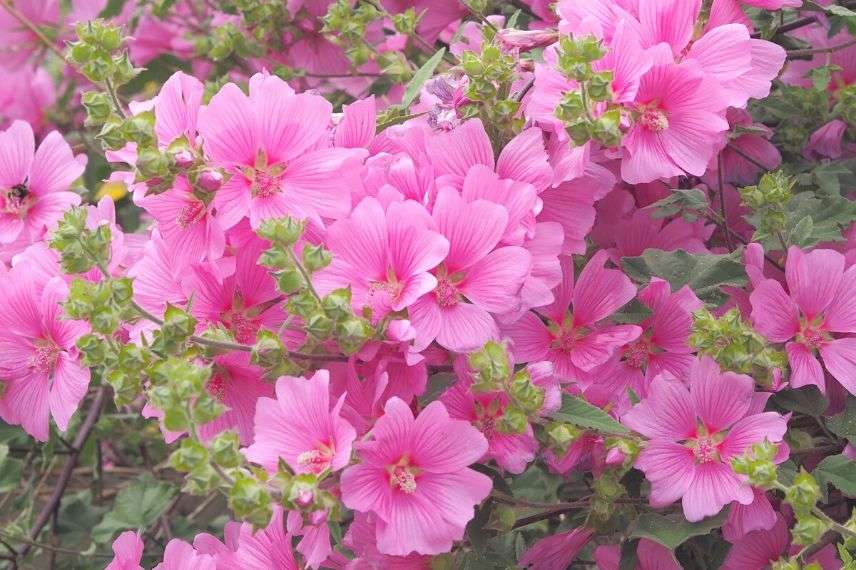
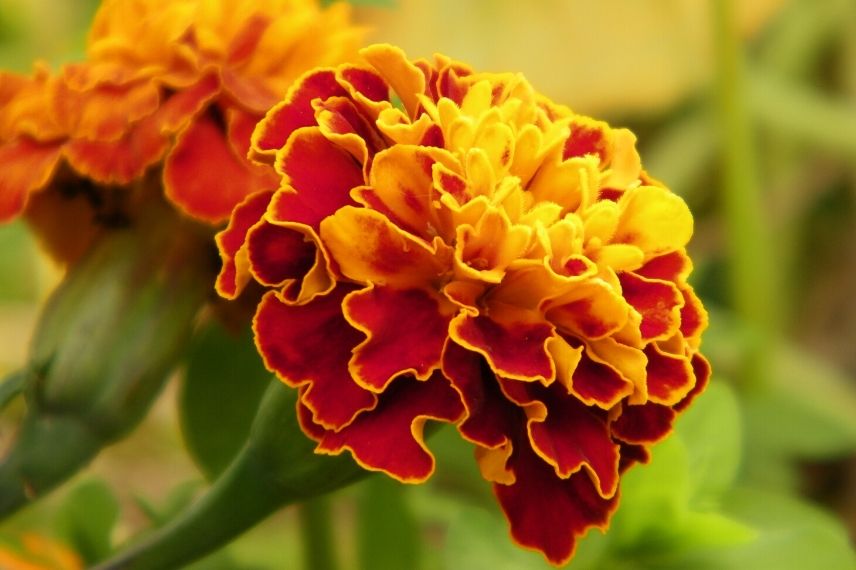
Comments